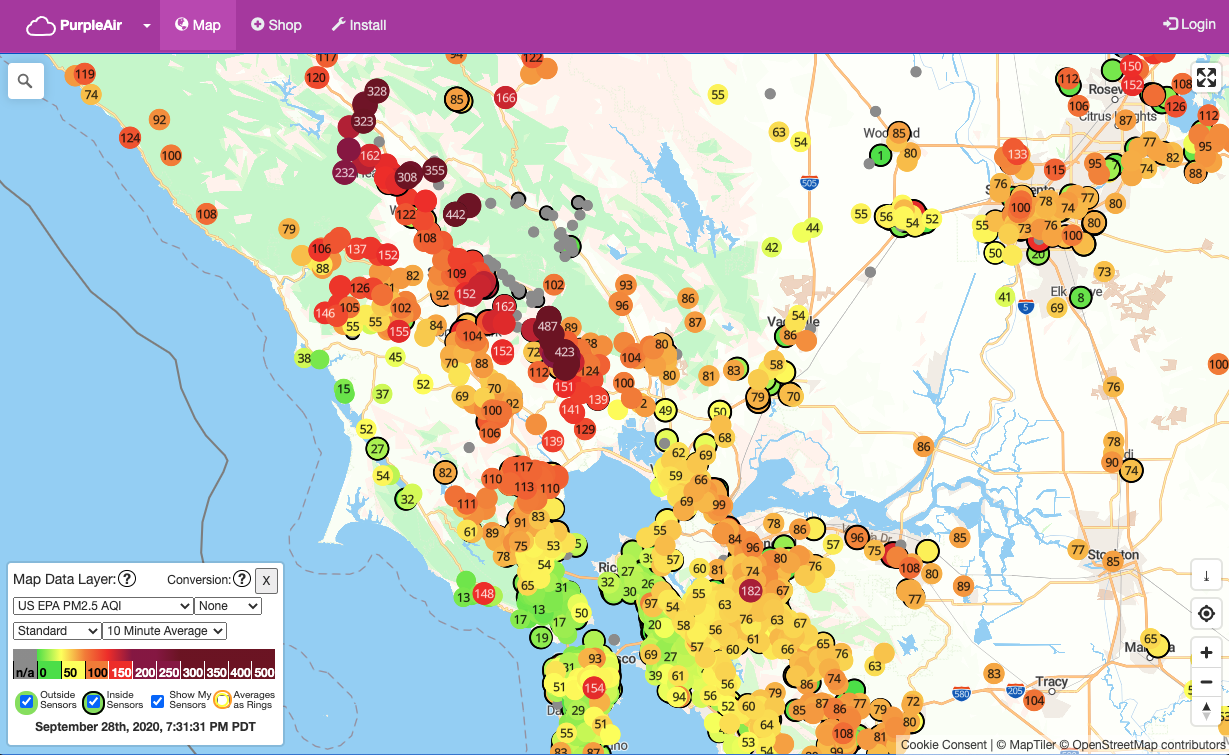By Ron Liskey | September 28, 2020
Purple Air
What Purple Air sensors measure
PurpleAir sensors measure airborne particulate matter (PM). Particulate matter describes solid particles suspended in air; this includes dust, smoke, and other organic and inorganic particles.
PurpleAir sensors use laser particle counters to count the number of particles by particle sizes 0.3, 0.5, 1, 2.5, 5, and 10 μm, and use the count data to calculate mass concentrations of PM1.0, PM2.5, and PM10.
How Purple Air sensors work
PurpleAir sensors use laser counters to measure particulate matter in real time. A laser counter uses a fan to draw a sample of air past a laser beam. Any particles in the air will reflect some light from the laser beam onto a detection plate, like dust shimmering in a sunbeam.
The reflection is measured as a pulse by the detection plate, and the length of the pulse determines the size of the particle while the number of pulses determines the particle count. The PM1.0, PM2.5, and PM10 mass concentrations are calculated from these particle counts.
Where are Purple Air sensors used
PurpleAir sensors are used by a wide variety of individuals and groups from government air districts, school districts, and universities to industrial and commercial organizations to home enthusiasts and concerned citizens.



